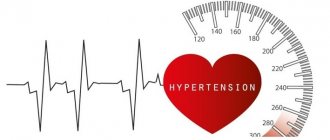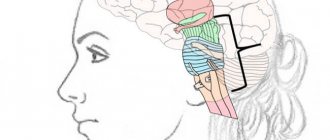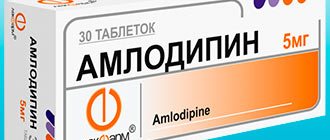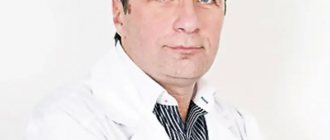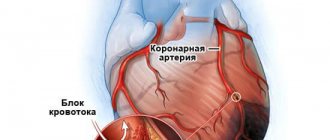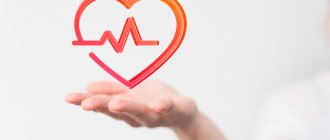As women age, the likelihood of having a stroke increases significantly. So, if in women over 60 years of age the incidence rate is 2-3%, then at the age of 75 to 80 this percentage increases to 11%. At this age, both men and women are equally at risk of stroke. Due to age-related disorders in brain tissue, cerebral infarctions and spontaneous hemorrhages develop more often. At this age, symptoms are not as pronounced as at a younger age. Symptoms may be flickering or wave-like. The lesions may be small and therefore may go unnoticed. Accordingly, prolonged treatment time will not give the expected positive effect.
It is known that during a stroke, brain cells (neurons) die. The more neurons died, the worse the consequences of the disease. Diagnosis is also complicated by the fact that it is very difficult to obtain a clinical picture in an elderly patient. Therefore, doctors use instrumental diagnostic methods - CT and MRI. Computer diagnostics will help to accurately determine the location of the lesion, its size, and whether there were other undetected microstrokes and in what quantity.
Types of stroke
Clinicians distinguish two types of stroke: hemorrhagic and ischemic. The ischemic type accounts for more than 80% of all cases of the disease. It occurs due to narrowing or blockage of blood arteries, which impedes the flow of oxygen to the brain. Typically, this type of stroke occurs after age 60.
Hemorrhagic occurs when blood vessels rupture as a result of high blood pressure and bleeding in the brain. In this case, the prognosis for recovery is unfavorable and the survival rate is quite low.
It is also worth highlighting transient ischemic attack (ministroke). An acute transient circulatory disorder lasts from 5 to 10 minutes, but if this is not given due importance, the consequences can be quite serious.
Classification of strokes
Strokes are classified according to the causes of circulatory disorders and the duration of neurological symptoms. At the Yusupov Hospital, the patient will undergo a diagnostic examination, which will allow the type of stroke and the area of brain damage to be very quickly and accurately determined. When a patient is admitted to the clinic, a number of studies are carried out as prescribed by the doctor:
- MRI – magnetic resonance imaging;
- CT – computed tomography;
- Doppler ultrasound;
- cerebral angiography.
Classification of ischemic stroke (infarction) of the brain:
- hemorheological blockage of cerebral vessels. This condition develops with increased blood clotting and platelet aggregation;
- embolic stroke. Occurs in 20% of cases of ischemic stroke, develops when an artery is blocked by emboli (intravascular substrates) that enter small vessels from larger blood vessels;
- atherothrombotic stroke. Found in 50% of patients with ischemic stroke. A blood clot forms at the site of the atherosclerotic plaque, leading to blockage of the vessel;
- lacunar stroke. Arterial hypertension leads to the development of atherosclerosis, which causes narrowing of small arteries and reduced blood flow to areas of the brain. Occurs in 25% of cases;
- hemodynamic stroke. The pathological condition is caused by a sharp narrowing of a large vessel in the brain due to a drop in blood pressure during heart failure. Blood flow to a part of the brain stops, and an ischemic stroke develops.
Classification of hemorrhagic strokes:
- an outpouring of blood when a vessel ruptures in the brain tissue - parenchymal hemorrhage;
- formation of hematoma in the ventricles of the brain - intraventricular hemorrhage;
- hemorrhage into the cavity between the pia mater and the arachnoid membrane is called subarachnoid;
- Epidural, subdural and mixed forms of hemorrhages are quite rare.
Classification according to the duration of neurological symptoms:
- minor stroke – symptoms manifest from one day to three weeks. Recovery from one day to three weeks;
- transient ischemic attack - symptoms last for about a day, recovery within a day;
- Completed ischemic stroke – symptoms of the disease have been observed for more than three weeks, recovery does not occur for more than three weeks.
Signs of a stroke
Most often, cerebrovascular accident occurs suddenly. Symptoms include:
- Increased blood pressure.
- Strong headache.
- Dizziness.
- Loss of balance.
- Noise in ears.
- Visual impairment (loss of fields).
- Numbness of the facial muscles and limbs.
- Articulation impairment.
In addition, older women may have atypical symptoms: hiccups, fever, attacks of fear.
A stroke can develop from several hours to days. You can understand that changes in blood circulation are occurring by the occurrence of tachycardia (rapid heartbeat), attacks of fear, decreased attention, and loss of orientation.
The appearance of such symptoms is a reason to seek emergency medical help. Taking timely measures will help stop cell death and avoid serious complications.
Signs and symptoms after a stroke
The symptoms of a stroke largely depend on the cause of the disease. The first signs of a stroke are the following symptoms:
- sudden numbness or weakness in an arm or leg on one side of the body;
- confusion;
- Strong headache;
- speech disorder;
- decreased visual acuity;
- dizziness;
- loss of balance or coordination.
The speed at which symptoms of an ischemic stroke appear may indicate its origin: if an acute cerebrovascular accident is caused by an embolism, the disease is sudden. Headache and seizures may develop within seconds of arterial thromboembolism.
In patients with the consequences of a stroke, there are three main types of disorders:
- damage, defect. The following damages after a stroke are distinguished: motor, cognitive, emotional-volitional, speech, visual, sensory, sexual and pelvic disorders;
- impaired ability. Expressed in impairment of walking and self-care;
- impairment of social functioning. It is expressed in the restriction of the implementation of the social role that was the norm for the patient before the illness.
Symptoms after a stroke go away if doctors begin rehabilitation measures in a timely manner. When a patient is admitted to the neurology clinic of the Yusupov Hospital, a team consisting of the following specialists is included in the rehabilitation process:
- neurologists;
- therapists;
- kinesitherapy specialists;
- aphasiologists;
- massage therapists;
- physiotherapists;
- acupuncturists;
- psychologists;
- biofeedback specialists.
Muscle pain due to stroke
Muscle pain after a stroke, which should be treated immediately, occurs in most patients. Muscle soreness can interfere with the body's recovery. Post-stroke pain can be strategic or thalamic. Strategic pain occurs in the area of the brain that controls sensations, particularly pain, and is caused by spasms. Thalamic pain appears after a stroke in one side of the body several months after the circulatory disorder.
The occurrence of pain after a stroke can be associated with various factors. Neurologists and rehabilitation specialists advise patients to follow recommendations that will prevent the onset of this condition. Measures to prevent muscle pain after a stroke:
- do not take hot baths;
- prefer clothes made from natural materials, do not wear light clothes;
- be in a comfortable position and avoid tightly grouping the body;
- do not put pressure on the affected side;
- use special devices for paralyzed and weakened limbs;
- fix the paralyzed arm while sitting so that the pain localized in the shoulder does not get worse;
- When moving, support from another person is desirable.
If you have pain in the legs after a stroke, it is important to trust treatment to qualified neurologists and rehabilitation specialists.
Stroke in older women
According to statistical studies, stroke occurs in 1.5-2% of the population every year, while timely medical care is provided only in 50% of cases. It is for this reason that this pathology often causes disability and death.
As a rule, women are susceptible to stroke after 60 years of age, while in men this risk occurs much earlier - after 40 years of age. This is largely due to hormonal disorders that occur in the body of women during menopause. Smoking, alcohol, long-term use of hormonal drugs, and blood clotting disorders also contribute to the development of stroke in women.
Women suffer the pathology more severely than men and only a small percentage of patients return to a normal lifestyle. The reason for this is untimely provision of medical care.
Treatment of stroke in Moscow in elderly women
Symptoms of stroke in older women arise as a result of the acquisition of cardiovascular pathology after menopause. After vascular accidents in the brain, about 20% of women can move only with the help of crutches or other devices; this disorder can be eliminated with proper rehabilitation and the desire of the patient.
To prevent the consequences of a stroke, it is important to promptly recognize the disease by the first signs and hospitalize the patient. Doctors at the Yusupov Hospital in the neurology clinic treat stroke patients, even with severe manifestations of the disease. The clinic's diagnostic equipment allows you to quickly assess your condition and make a diagnosis. A team of professors and doctors of the highest category uses modern equipment and accumulated knowledge to save the lives of patients.
At the Yusupov Hospital, for the convenience of patients and their families, comprehensive rehabilitation programs have been created, which include step-by-step treatment of the disease, a wide range of services and the ability to add services and treatment. The patient’s recovery after a stroke takes place with the participation of doctors of various specializations: rehabilitation specialists, neurologists, speech therapists, occupational therapists, neuropsychologists. You can make an appointment with a neurologist in Moscow, and also ask questions by phone.
How to recognize a stroke
You can determine the development of a stroke by doing the following:
- Try to quickly repeat the phrase.
- Smile widely (if a stroke develops, the immobility of part of the face will be noticeable).
- Raise your arms up (if cerebral circulation is impaired, this will not be possible).
- Ask the person to show their tongue (in the case of a stroke, its tip will be deviated towards the brain lesion).
If the patient cannot pass this test, you must immediately call an ambulance, and during this time provide first aid:
- Lay the patient down, raising his head above body level.
- Provide air flow (open a window, balcony).
- Free yourself from tight clothing (unfasten your bra, belt, belt, tie, etc.).
- When vomiting, turn your head to the side.
- Measure blood pressure, pulse, record all readings.
When signs of a stroke appear, it is important to behave calmly and reassure the person, since excessive emotionality contributes to increased blood pressure.
Prognosis and possible complications
Stroke in old age often has severe complications and consequences. The most favorable prognosis is partial restoration of functions affected by damage to parts of the brain.
Most often, older people who have suffered from this disease have problems with disorientation, speech and coordination of movements. However, this is only possible if medical care was provided in a timely manner.
If medical assistance is not provided within 2-3 hours after the onset of the first symptoms, then the person is susceptible to complications such as:
- Paralysis, paresis.
- Serious speech defects (up to its complete absence).
- Strabismus and other vision pathologies.
- Urinary and fecal incontinence.
- Dysphagia (impaired swallowing).
- Cardiac ischemia.
- Poor circulation of the inner ear, often hearing loss.
- Parkinson's disease.
In most cases, people who have had a stroke are unable to lead a normal life and require constant care.
Types of stroke according to general classification
According to clinical characteristics, there are two types of stroke: primary and secondary, which in turn are divided according to the nature of the pathology. Subarachnoid causes a sharp rupture of too brittle and fragile vessels, which causes profuse hemorrhages and tissue destruction.
Ischemic stroke is associated with impaired patency of cerebral vessels, which occurs for various reasons. Most often, these are formed blood clots or air plugs, which leads to blockage of blood vessels and hemorrhage, oxygen starvation of nerve cells and receptors in certain areas.
Hemorrhagic stroke is associated with localized, widespread, or generalized areas of hemorrhage with a risk of affecting the entire brain. This is the most acute form of the disease, which is why it is so important to organize the prevention of brain damage to avoid dire consequences.
All types of stroke
are not easy in old age and bring with them possible health complications. After suffering an attack, the elderly need not only full-fledged care, but also a rehabilitation and recovery program to neutralize the consequences.
Causes of stroke in older people
Considering all possible causes of stroke
There are several groups of factors that increase the risk of developing pathology. First of all, these are bad habits that a person does not want or cannot get rid of either in adulthood or in old age, jeopardizing his own health.
Smoking and systematic alcohol consumption, uncontrolled eating, and obesity lead to an increased risk. This group also includes maintaining a sedentary lifestyle, refusal to exercise and reluctance to undergo regular medical examinations.
Another group of factors are external causes, these include genetic predisposition and weakened immunity. The risk of cerebral stroke increases in people who experience frequent stress, have diagnosed cardiovascular diseases, and problems with blood pressure.
Age increases the risk of stroke; the older a person is, the higher the likelihood of developing such a serious pathology. In old age, you should pay more attention to your well-being, prevent a certain range of diseases, lead a healthy lifestyle and undergo regular medical examinations.
Prevention of stroke in the elderly
A set of preventive measures is developed after examination by a competent doctor and contains individual recommendations.
Most often, stroke prevention in older people includes a number of requirements that must be strictly followed:
- giving up bad habits and undergoing health therapy;
- reducing excessive overload and maintaining an active lifestyle;
- avoidance of stressful situations and psycho-emotional disorders;
- treatment of cardiovascular diseases and pressure surges;
- rational and balanced (dietary) and regular nutrition.
In addition to these recommendations, older people or their close relatives should carefully monitor their health. Mandatory measures include regular visits to the doctor, compliance with prescriptions and strengthening the immune system, avoiding risk factors for stroke.
Drug prevention measures
Thanks to routine examinations with a therapist, which are part of the stroke prevention complex, the risk of developing pathology can be identified in a timely manner. In this case, a competent doctor will evaluate the patient's health condition and suggest drug therapy as a preventive measure.
An individual therapeutic complex for stroke prevention with various medications is being developed for older people. This may include drug correction of cholesterol and sugar levels in the blood, stabilization and normalization of blood pressure parameters.
Often in the testimony of the attending physician one can find recommendations for anticoagulant and antithrombotic therapy. Care for the elderly in Moscow, organized by our network of private boarding houses, includes effective prevention and the possibility of rehabilitation after a stroke.
Rehabilitation
Elderly people who have suffered a stroke must undergo a long course of rehabilitation. This period is very important, since rehabilitation will help minimize the consequences of circulatory disorders and significantly improve your overall condition.
The list of actions to restore the patient includes both physical and psychological assistance. A person must feel important and supported; only in this case will he be able to overcome the psychological discomfort associated with the partial loss of cognitive functions.
Even if the patient’s motor function is normal, it is necessary to purchase an orthopedic mattress. When a disruption in activity does occur and a person has limited physical capabilities, it is necessary to regularly change his position (to avoid bedsores).
Often, a person who has suffered a stroke is prescribed medications to normalize blood circulation. They must be taken strictly according to the regimen prescribed by the attending physician. If signs of apathy or aggression appear, the help of a psychologist, and in some cases a psychiatrist, is necessary.
Prevention
The following preventive measures will help prevent a stroke:
- Annual medical examination (cholesterol control, blood glucose levels).
- Regular blood pressure monitoring.
- Quitting alcohol and smoking.
- Sleep at least 7 hours.
- Daily walking.
- Proper nutrition (the diet should include a lot of protein, vegetables, fruits).
- Active lifestyle (exercise, yoga, swimming).
Stroke is a disease that leads to disability. To avoid it, you need to be careful about your health and lead a healthy lifestyle.
